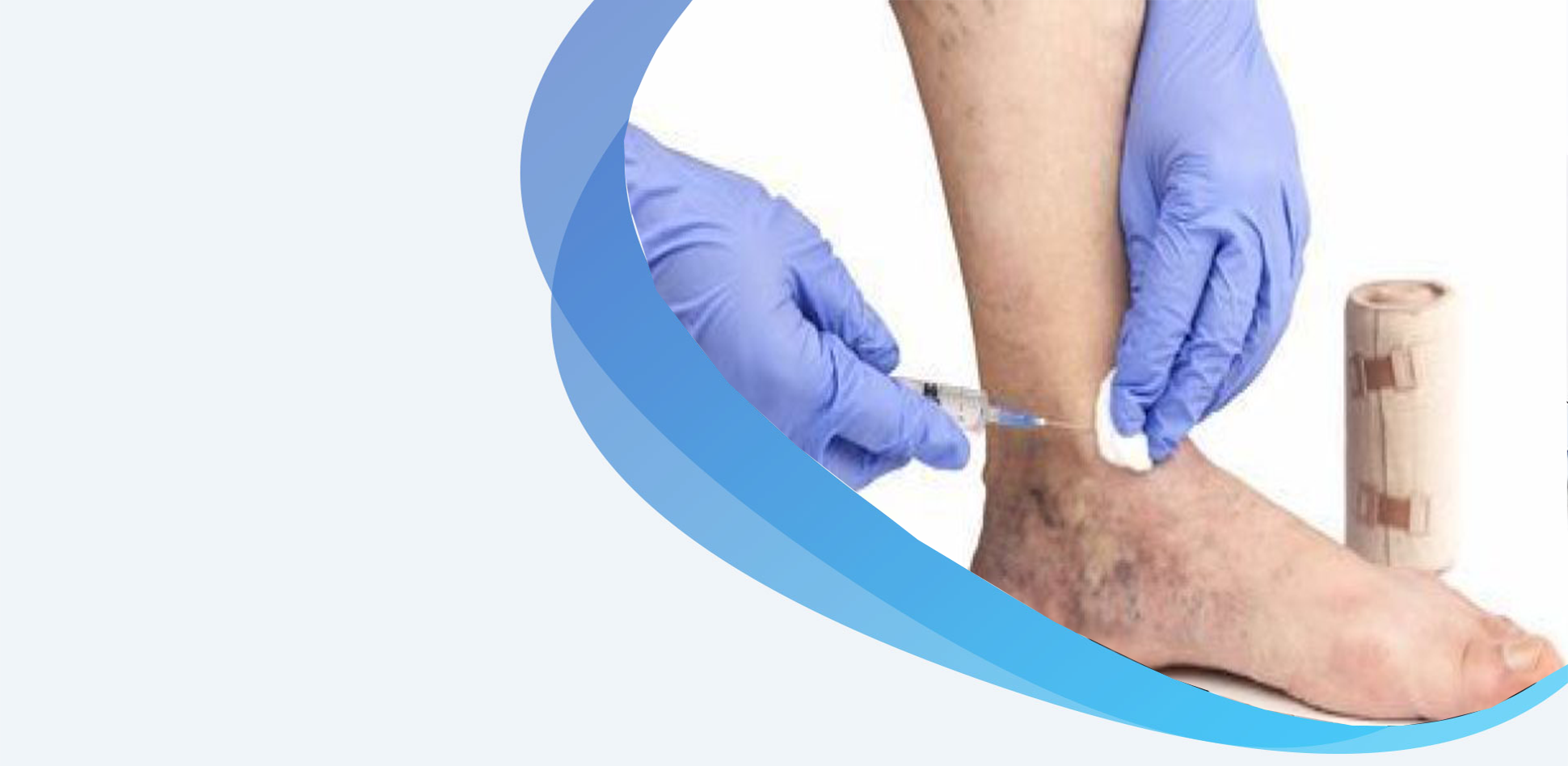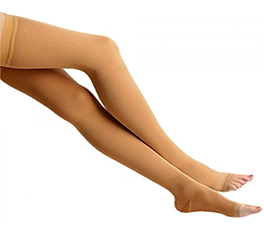Varicose Veins Medical Management


Large bulging veins in the legs that can cause many different types of symptoms. Varicose veins can occur in almost anyone and affect up to 35% of people in the India. You may inherit a tendency to develop varicose veins from a parent. Women, women who have had multiple children, and obese persons are at a higher risk.
You may have no symptoms.
Pain, itching, swelling, burning, leg heaviness or tiredness, skin discoloration. Symptoms typically worsen throughout the day and are partially relieved by elevation or wearing compression socks or stockings.
Sometimes, varicose veins clot and become painful, hot, hard and discolored. This is called phlebitis, an uncomfortable but temporary condition that will get better on its own in 2-3 months. Clots associated with phlebitis are limited to surface veins, and not dangerous - unlike clots in the deep veins (deep vein thrombosis or DVT) that are dangerous because they can travel to the heart or lung and require prompt treatment with blood thinners.
A shower or minor trauma can cause a varicose vein to burst and bleed.
Skin tears or ulceration indicate a very severe case
Among other things, veins are responsible for bringing blood back to the heart, sometimes working against gravity. When you walk, muscles in your leg squeeze the veins and help blood flow back into the heart. In normal veins, a series of valves assist this process. With varicose veins and with a related condition called chronic venous insufficiency, poorly functioning valves allow the blood to pool in the lower leg and cause symptoms.

You will be asked questions about symptoms and medical history, including questions about family members. The vascular surgeon will also perform a physical exam that includes gently probing for problem areas on your legs while you are standing.
A painless ultrasound is usually given during during the same office visit to pinpoint problem veins and determine the best way to treat them.

Symptoms worsen throughout the day, and can usually be improved with use of compression stocking or by elevating the feet.
Knee-high compression stockings, usually that provide 20-30 mmHg of compression, will often help relieve symptoms such as aching or swelling. These stockings compress the veins and prevent blood from traveling down pooling in the legs. If you have insurance, most companies require that you wear compression stockings for at least three months before covering any other type of treatment for varicose veins.
If compression stockings provide insufficient relief and if the affected veins are straight enough (determined by the ultrasound), some form of ablation therapy (laser, radiofrequency, or mechanical injection) is an option.
Treatment is administered at the vascular surgeon's office. Your leg will be cleansed and sterile drapes placed. The vascular surgeon will then inject numbing medication and insert a catheter (thin tube) into the vein. Typically, patients feel only the injection of numbing medicine. The tube is advanced through the entire vein and then all the surrounding skin is numbed. The ablation catheter is then started and the vein treated. This part of the procedure is painless and typically takes 20 minutes. After the procedure the leg is wrapped with a compression bandage.
If the affected veins are twisted and are not sufficiently straight, sclerotherapy may be recommended. With the help of ultrasound, a small needle is advanced through the vein to inject sclerosant, a chemical that causes the vein to spasm and clot. This type of clot is not dangerous and is broken down by your body's natural processes so that the varicose vein disappears. Small "spider" veins can be treated in the same way, using a very small needle.
After treatment, patients should continue to wear compression stockings to help prevent new varicose veins from forming, and to speed recovery after varicose veins are treated.

Most cases of Varicose Veins are diagnosed late and inadequately treated leading to uneccesary complications and bad outcomes. Early and precise diagnosis can help prevent need for surgery and give excellent cosmetic results with no scars and marks on your skin. Book a consultation today to have a detailed evaluation by a vascular surgeon and start using the correct compression stockings and drug therapy to ensure quick resolution of symptoms like leg pain and visible spider veins before it progresses to swollen veins and dreaded complications like venous ulcers and massive bleeding.